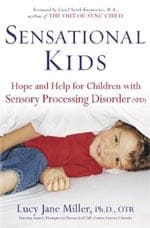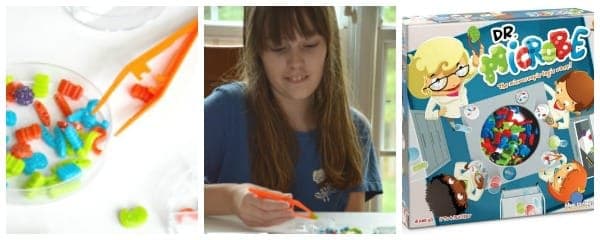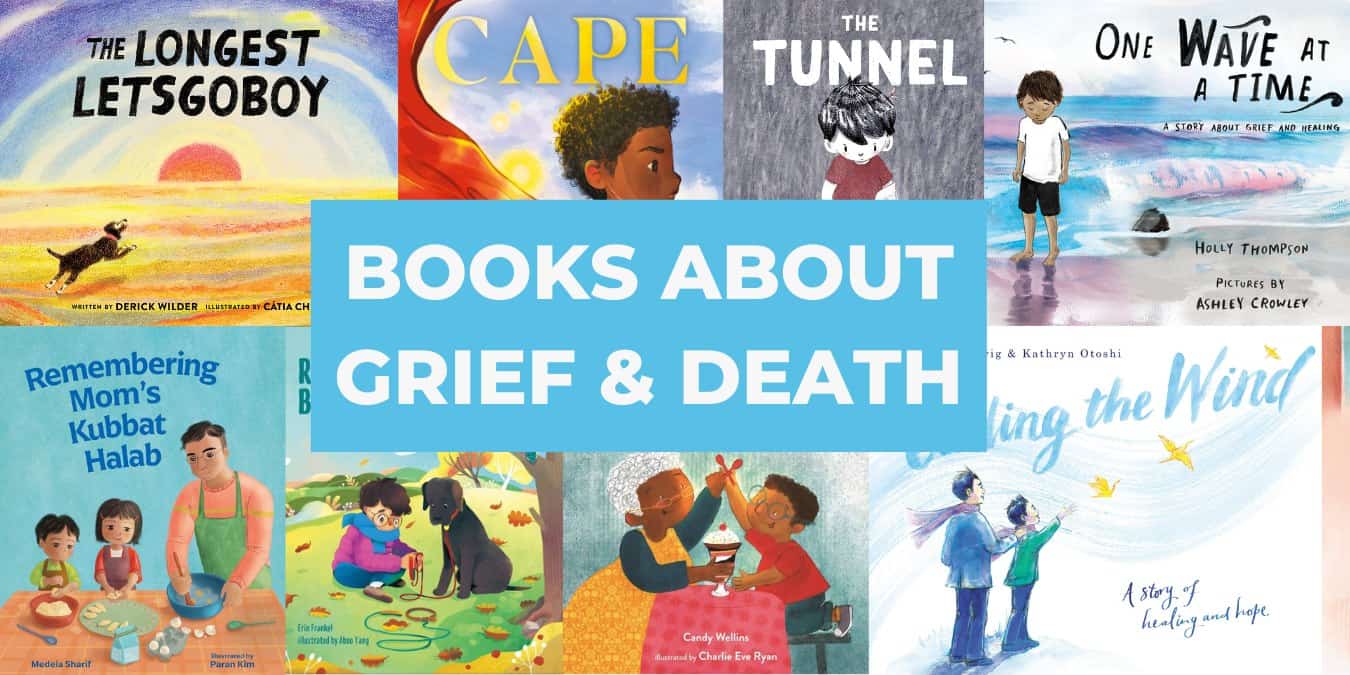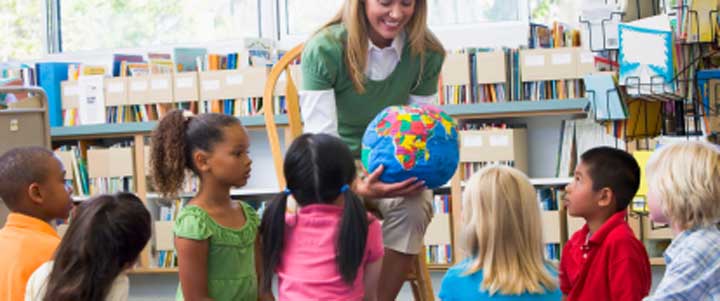My Daughter’s Non-Disorder Sensory Processing Disorder
This post may contain affiliate links.
Apparently, AJ has tactile Sensory Processing Disorder (SPD). This news is good and bad. The more I learn about SPD, I feel like finally we’re getting to what’s going on with AJ. But I’m mad, too — because she’s nine! How did the pediatricians and teachers miss this diagnosis for so long? (And, just to be clear, neither her teachers or her doctor finally got me to try Children’s Hospital in Denver to get AJ assessed — it was a social worker.)
SPD = THE NON-DISORDER DISORDER
But, the pediatricians and teachers aren’t to blame really. No one knows about SPD – and, according to Dr. Lucy Jane Miller, the nation’s leading SPD expert, it’s laughable to most doctors. (Remember Western doctor’s opinion of Post Traumatic Stress Disorder a decade ago? )
No one knows about SPD because technically, SPD doesn’t exist – at least not until the American Psychiatric Association puts it into the Diagnostic and Statistical Manual (The DSM) and says it’s an actual disorder.
Okay, so how do you get in the DSM?
Miller says, “It’s political. He who has the strength, gets his way,” about the process of acceptance into the DSM, and admits she isn’t sure if the years of research she’s submitted from well-respected universities like Harvard, Yale, and MIT will count for anything. “Oprah. If we could get on Oprah, we’d get in,” she adds. “I’ve been doing this for 35 years and it makes no sense.”
WHAT IS SENSORY PROCESSING DISORDER?
Sensory Processing Disorder (formerly called Sensory Integration Dysfunction) is an umbrella term which covers a variety of neurological disabilities related to “the inability to use information received through the senses in order to function smoothly in daily life.” (The Out-of-Sync Child, Kranowitz.)
In 1972, A. Jean Ayres, Ph.D. O.T.R., published a book suggesting that sensory issues in children weren’t symptoms of other disorders but in fact, their own unique and unrecognized disorder.
Miller explains that we now know that there are different subtypes of SPD. The one that applies to AJ is sensory over responsiveness particularly with tactile but also with auditory, taste, and smell.
“Children who are over-responsive to sensation exhibit “sensory defensiveness” – an aversion to touch, sound, light, or other sensory input. Many of these children are fussy babies who grow into toddlers and grade schoolers who are anxious, have trouble making transitions, have frequent tantrums or meltdowns, and/or have difficulty in social situations.” (S.T.A.R. website)
SO, SHE ACTS LIKE THIS BECAUSE OF SPD?
Even as a baby, AJ didn’t like being held, rocked or cuddled. She flinched when hugged up until recently. The only time she fell asleep in someone’s arms, my husband’s, she was sick. I never got to rock her to sleep. Ever.
She’d have screaming tantrums with hair brushing, nail clipping, going to the doctor, and getting in her car seat. I was always envious of the moms who could run more than one errand — I had a two errand limit before total meltdown would happen. There were no exceptions. (I even cut her hair off after threatening . . . if you throw a fit one more time . . . and when one more time arrived, chop, chop.)
One of the worst experiences of my life was AJ’s three-year-old well-care checkup. It also was the beginning of the pediatrician missing things and me feeling like a total failure as a mother. The first part of the visit required AJ to get on the doctor’s scale and get weighed. AJ refused –crying and screaming. We were in a common area, not in a room so we had a nice large audience for this whole interaction. JJ had just been born, I was still wearing my velour maternity sweatpants and matching jacket.
I started out with my best parenting techniques (“Look, this will be fun! Mommy will show you. See?”) and slowly deteriorated to bribing (“I’ll buy you an ice cream”) and then to inventing consequences (“You will not get an ice cream!”)– nothing worked. It was a ONLY a scale! All she had to do was step on it for a few seconds.
AJ was so out of control that she started biting her arm. At this point, I was profusely sweating and about to cry. I had no idea what to do. Eventually, I got weighed by myself and then weighed again holding a flailing AJ. After more screaming and crying, we were sent home without even the basics of the well-care visit. I bought everyone that helped us Starbucks gift cards and resigned myself to being a failure as a mother.
But, wouldn’t this be a great time to have given AJ some sort of screening?? — and give us both the help we needed? Instead, I believed that her behavior was because I wasn’t a good parent. Now I wonder if any of it was in her or my control when her senses were that overstimulated.
I could go on and on with stories that I now can see as behaviors that indicated AJ’s sensory processing disorder. (Even chewing on her clothes and hair is a common behavior! I only learned this a few weeks ago!)
UNTREATED SPD
I’m still learning but apparently, there are some predictable consequences that happen when a child has SPD:
- poor fine motor skills
- poor social skills
- inflexible thinking
- lack of creativity
- difficulty with motor planning
Read more about how we’ve discovered a connection between AJ’s SPD and her anxiety.
TREATING SPD
Occupational Therapy — activities to help with proprioception, vestibular, tactile, auditory, visual, smelling and feeding.
I’m “brushing” AJ’s entire body with a plastic bristle brush. Also, I do joint compressions to help with low tone. (I think?) Also, we’re playing more with textured things, doing lots of movements like pushing, swinging, jumping – things we already do.
When the meltdowns occur, and they do, I give AJ a huge bear hug – sometimes wrap her up like a burrito in a blanket and hold her tight. It seems counter-intuitive but it really works!
WHAT I’M READING
The Out-of-Sync Child by Carol Stock Kranowitz, M.A.
Sensational Kids by Lucy Jane Miller
Raising a Sensory Smart Child by Lindsey Biel and Nancy Peske
Hartley’s Life With 3 Boys
SPD Blogger Network
Lemon Lime Adventures
QUESTIONS FOR YOU
Have you experienced SPD in your life? How so?
Do you have any advice that will help me in this process?
You Might Also Like
Anxiety & It’s Connection to SPD
6/2013: SPD still not in the DSM.
Ideas for Kids Who Don’t Like Reading








Hi –just caught this post–I am an OT–I have worked mainly with rehab/neuro geriatrics and homecare but I will say I have a 2 year old with gross motor delays–mild but I picked up on them at around 8 months and had to convince the pediatrician at 15 months to get her assessed–I will say ALL the books you are reading are the best–I think the out of sync child has an activity book and may have a new book to come out. As far as Yoga goes I think it is great–I just started Yoga with Emmy—I see some issues–mild but I see them and just when I think I have a handle on her “sensitivites” she goes in a complete other direction with it ALL.I started yoga for overall balance, centering of self and she has mild postural insecurity–I did/do to start the yoga kids one–it has a white cover–my aplogies for not knowing the actual name but I got it from the library and it is the best I have found. I think the instructor is an OT–I have tried 6 different ones and I like her style and of her dvd’s the one with the white cover the best–I hope that helps. The best thing I can say is keep learning and help your child learn self awareness–that is my approach–keeping it simple–but I know EMmy is much younger. Best of luck– Michelle
thanks, Michelle!!
Wow Melissa. I’m glad you finally got an answer, just sorry it took so long. Thank you for sharing your story. I used to nanny a child with Rett Syndrome who had sensory processing disorder. I remember she was unable to calm herself down.
You are an awesome parent…don’t ever doubt that. Get her on a 504 plan at school to make sure modifications stick if you need them.
Take care,
Diane
thanks, you know how it is then!
My oldest uses noise canceling headphones, a wiggle seat, and a foot block at school. We just wrote up a 504 plan to make sure these things continue as needed. She gets sensory breaks at school and I am going to push keyboarding this summer so she can use this next year to help with writing. We are 3 years in and the sensory issues come and go (I call it cycling). Feel free to call if you need any help or ideas.
Sarah
is the foot block for posture / handwriting? I’m going to call you b/c I need to come over and see what you’re already doing that works. Thanks, Sarah!
Ah! Noise Canceling headphones! They are a life saver for us!
Do you think something like yoga for kids would be good? Would it help to learn to relax? or biofeedback to relax? I don’t know if that helps at all… just thinking off the top of my head with no knowledge of this condition.
theoretically – we have mats and a million dvds. Getting her to cooperate and try — not so much. She needs more movement anyway – so we have a trampoline and playset. I’m considering how to get a zipline in our backyard. Mostly because that just sound really fun for me. LOL.
I am an avid Yogi and I teach my kids meditation, but it is not always helpful for SPD kids. Many of them need active things (like the trampoline and zipline) They are seekers; looking to feel better and sometimes sitting still is literally painful for them.
My son is getting better at using words with us (he is now 8) and he will say “BUT I can’t sit! i NEED to move or I will explode” This is not him being funny, but him being very serious in how e perceives his world and being.
Thankfully I can get him to meditate on occasion. We are religious so incorporating Jesus into it helps him.
Thanks for sharing. My pediatrician gave us “Raising a High-Needs Baby” or something like that by Dr. Sears. Everything she told us about our 1-month old turned out to be essentially spot on. Our daughter is 8 now and we’re still having trouble in social situations. But this gives me hope and a kick in the butt to find out more about it.